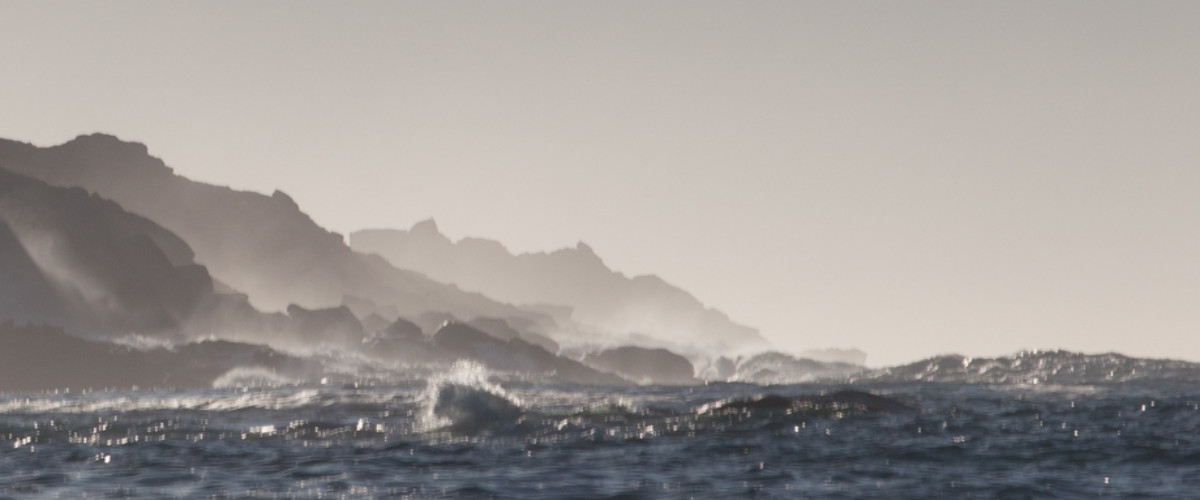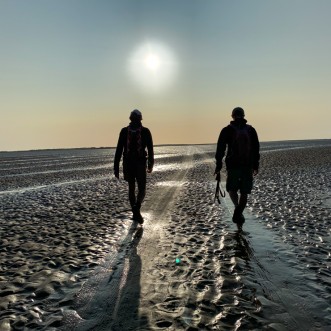Safety first
Islands are fabulous places but sometimes can be dangerous ones too. Here are some hints and tips to stay safe:
- Always check the weather, including wind speed and direction. A straightforward walk on a benign day can become very dangerous in choppy seas and strong winds, particularly if the walk is based on the island’s foreshore or high cliffs. The leeward and windward side of islands can also be like two completely different worlds. Unusually high or low barometric pressure, or prolonged periods of strong winds can also result in variations between actual sea level and the predicted tide heights. So those low tides that you need to return to safety may not be so low in high winds.
- If you are walking out to a tidal island always check the tides. If you miss the low tide do not attempt to cross an incoming tide. Stay on the island, it’s only 12 hours until the next low tide. Make sure you go prepared just in case you do get stranded with wind and waterproof coats, extra layers, food and water. Also, many islands do not have good mobile phone signals – so help may not be readily summoned and to be honest they are not always happy to come and get you if all you needed to do is sit it out if it is safe to do so. For further information see the sections on weather and tides.
- Contact and emergency numbers – always let someone know where you are going, the route you are taking and your expected return time. If you do have a problem and you have intermittent reception or a low battery, you might be able to use the Emergency SMS service. It’s important that you register your phone first; simply text ‘register’ to 999 and follow the instructions on the reply. See www.emergencysms.org.uk.
- Understand the duration, terrain and ascent of the island to ensure that you can safely circumnavigate the island within your levels of fitness and experience
- Last but not least, always take an OS Map with you. Many islands require good map skills to navigate around the more difficult sections.
Now the respect bit
Islands operate differently to the mainland. There is often a way of life on them that can take time to fully appreciate. That said, if you get it right, you’ll not find places anywhere more welcoming and friendly. They are also generally places of glorious freedom so rules don’t seem to exist. Here are some quick general thoughts on how the islandeer can help to preserve these special places:
- Stating the obvious – don’t start fires or leave litter, pick flowers, disturb the peace, harass the wildlife or annoy the locals.
- Dogs – they are not always welcome and further information is available under each island description.
- Camping – make sure the landowner or local community don’t mind.
- Rats – some birdy islands are keen to keep rats off of the island. You will be asked on the sensitive islands to show that your baggage doesn’t contain a furry friend.
- Birds – there are lots and lots of special places for nesting and migrating birds on the islands. Please be sensitive about walking in the vicinity of these. Once disturbed many of them will not return to the nest. Under each island description there should be some guidelines, but if unsure always ask the owner of the island or the locals (if there are any).


